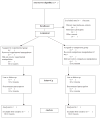Reporting standards for research in psychology: why do we need them? What might they be?
- PMID: 19086746
- PMCID: PMC2957094
- DOI: 10.1037/0003-066X.63.9.839
Reporting standards for research in psychology: why do we need them? What might they be?
Abstract
In anticipation of the impending revision of the Publication Manual of the American Psychological Association, APA's Publications and Communications Board formed the Working Group on Journal Article Reporting Standards (JARS) and charged it to provide the board with background and recommendations on information that should be included in manuscripts submitted to APA journals that report (a) new data collections and (b) meta-analyses. The JARS Group reviewed efforts in related fields to develop standards and sought input from other knowledgeable groups. The resulting recommendations contain (a) standards for all journal articles, (b) more specific standards for reports of studies with experimental manipulations or evaluations of interventions using research designs involving random or nonrandom assignment, and (c) standards for articles reporting meta-analyses. The JARS Group anticipated that standards for reporting other research designs (e.g., observational studies, longitudinal studies) would emerge over time. This report also (a) examines societal developments that have encouraged researchers to provide more details when reporting their studies, (b) notes important differences between requirements, standards, and recommendations for reporting, and (c) examines benefits and obstacles to the development and implementation of reporting standards.
Figures

References
-
- Altman DG, Schulz KF, Moher D, Egger M, Davidoff F, Elbourne D, Gotzsche PC, Lang T. The revised CONSORT statement for reporting randomized trials: Explanation and elaboration. Annals of Internal Medicine. 2001. pp. 663–694. Retrieved April 20, 2007, from http://www.consort-statement.org/ - PubMed
-
- American Educational Research Association. Standards for reporting on empirical social science research in AERA publications. Educational Researcher. 2006;35(6):33–40.
-
- American Psychological Association. Publication manual of the American Psychological Association. 5. Washington, DC: Author; 2001.
-
- American Psychological Association, Council of Editors. Publication manual of the American Psychological Association. Psychological Bulletin. 1952;49(Suppl, Pt 2)
-
- APA Presidential Task Force on Evidence-Based Practice. Evidence-based practice in psychology. American Psychologist. 2006;61:271–283. - PubMed
Publication types
MeSH terms
Grants and funding
LinkOut - more resources
Full Text Sources
